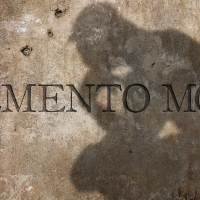Memento Mori: The Positive Power of Thinking About Dying

Most people try not to think about death and dying as much as possible. And this logic is understood—the uncertainty and finality of death can range from unsettling to paralyzing. While this is true, there’s actually a wing of ancient philosophy that teaches the opposite—that there are immense benefits to remembering that, one day, you will die. And it’s enjoying a resurgence in popularity.
Memento Mori: Remember, You Are Mortal
One of the primary meditations of the ancient philosophy of Stoicism is a concept called “memento mori” — which roughly translates in Latin as, “remember that you are mortal.”
If you heard this uttered by someone at a party, you’d likely think, “who invited this guy?” However, when the case for constantly reminding yourself that you’re going to die is given a bit more depth and context, billions of people for thousands of years have used this meditation in profoundly positive ways—often compelling them to do accomplish feats they otherwise would not have.
Ancient Death vs. Modern Death
Even just a few hundred years ago, the average person’s relationship with death was starkly different than it is today. In the past, most people had some kind of personal and possibly even frequent encounter with the evidence of death—whether through war, workplace hazards, or disease that is now prevented simply by washing one’s hands. Today, unless one works in the medical field or the mortuary services, most likely rarely encounter death. Gone are the days of helping prepare a loved one’s body for an in-home wake. Those duties have been largely sterilized and delegated to the professionals.
And with the outsourcing of these lifecycle duties, most people rarely look death directly in the face. Due to this lack of familiarity with death, the very idea that they will die makes them shiver with fear. Others, however, are using the concept of “memento mori” to fuel their lives.
Why Meditate On Death?
It sounds so counterintuitive to want to focus on your own mortality. However, for many, meditating on their own mortality is often a helpful reminder to live.
“Reminder to live? How could I forget?”
Though many don’t feel like they need a reminder to live, the concept has been used to remind countless individuals throughout history and into today that their lives are often shorter than they think—using this motivation for meaningful action. Some use the symbolism “memento mori” not only as a reminder of death, but also to stop wasting time dreading the future, agonizing over the past, procrastinating in the pursuit of their goals, or holding grudges against others.
Memento Mori Tops the Country Music Charts
If “memento mori” still sounds fairly bleak, perhaps it can be best understood in the lyrics of a chart-topping country music song by Tim McGraw that exposed more to the positive side of “memento mori” than any work of art in modern history:
“I asked him
‘When it sank in
That this might really be the real end
How's it hit you
When you get that kind of news?
Man, what'd you do?’
He said
‘I went skydiving
I went Rocky Mountain climbing
I went 2.7 seconds on a bull named Fumanchu
And I loved deeper
And I spoke sweeter
And I gave forgiveness I'd been denying’
And he said
‘Someday I hope you get the chance
To live like you were dying.’”
The purpose of “memento mori” is not to carry a dark cloud above one’s head, but to compel one to lead a rich life of purpose, perspective, and deeper relationships.
“You could leave life right now. Let that determine what you do and say and think.”
- Marcus Aurelius
Roman Emperor and Stoic Philosopher
Hospice & Palliative Care in Tulsa, OK
Cura HPC Hospice & Palliative Care is honored to serve the families of Oklahoma with the same compassionate and professional care we would (and do) provide for our own families.
